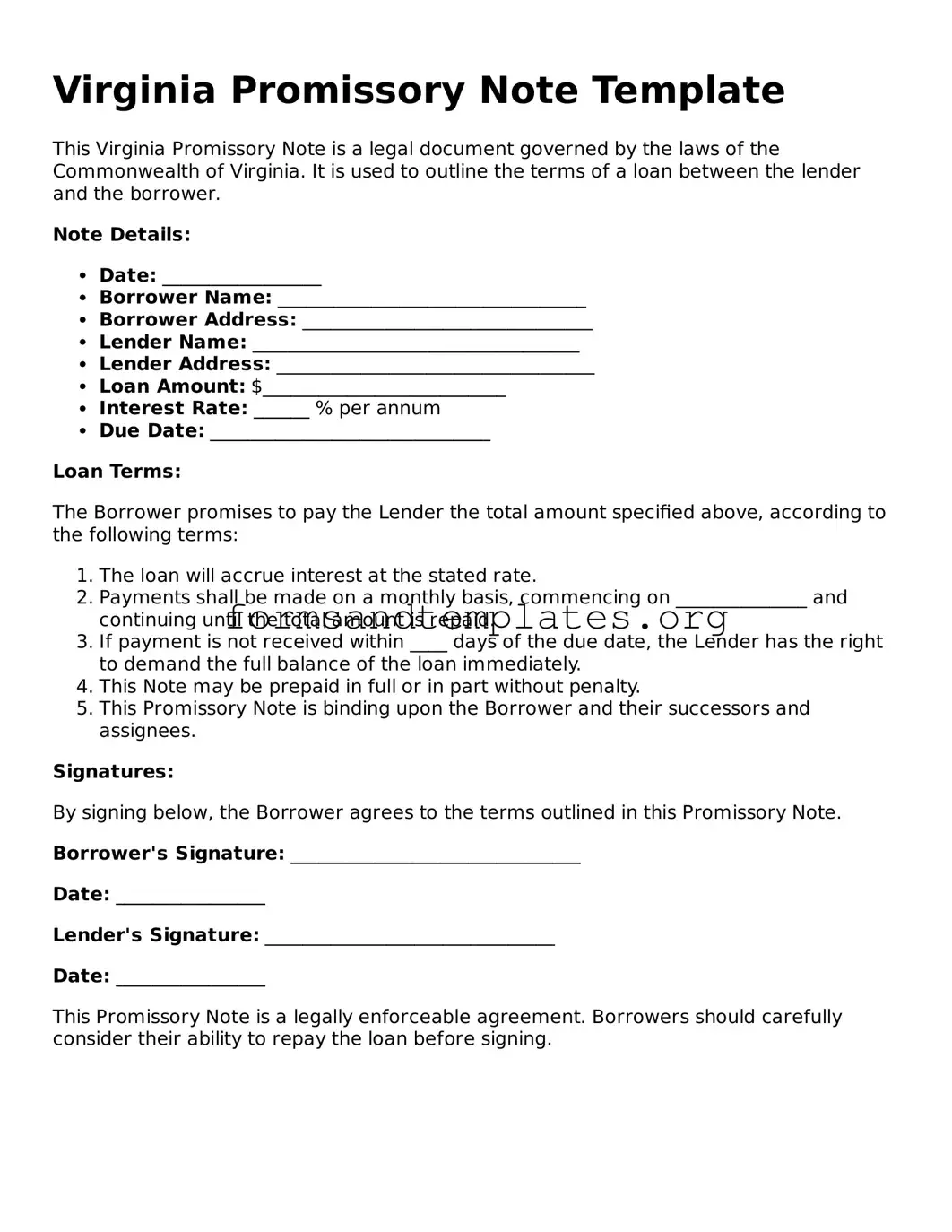Virginia Promissory Note Template
This Virginia Promissory Note is a legal document governed by the laws of the Commonwealth of Virginia. It is used to outline the terms of a loan between the lender and the borrower.
Note Details:
- Date: _________________
- Borrower Name: _________________________________
- Borrower Address: _______________________________
- Lender Name: ___________________________________
- Lender Address: __________________________________
- Loan Amount: $__________________________
- Interest Rate: ______ % per annum
- Due Date: ______________________________
Loan Terms:
The Borrower promises to pay the Lender the total amount specified above, according to the following terms:
- The loan will accrue interest at the stated rate.
- Payments shall be made on a monthly basis, commencing on ______________ and continuing until the total amount is repaid.
- If payment is not received within ____ days of the due date, the Lender has the right to demand the full balance of the loan immediately.
- This Note may be prepaid in full or in part without penalty.
- This Promissory Note is binding upon the Borrower and their successors and assignees.
Signatures:
By signing below, the Borrower agrees to the terms outlined in this Promissory Note.
Borrower's Signature: _______________________________
Date: ________________
Lender's Signature: _______________________________
Date: ________________
This Promissory Note is a legally enforceable agreement. Borrowers should carefully consider their ability to repay the loan before signing.
